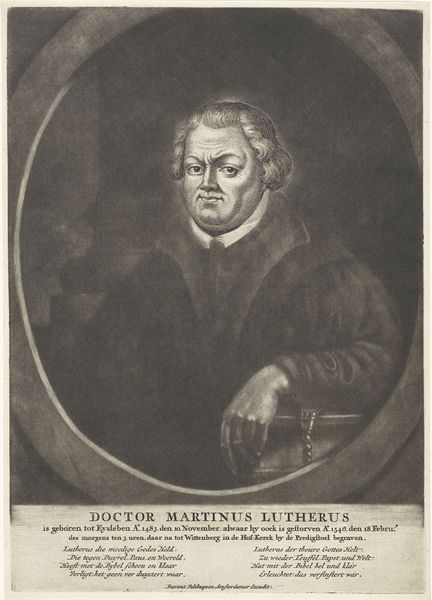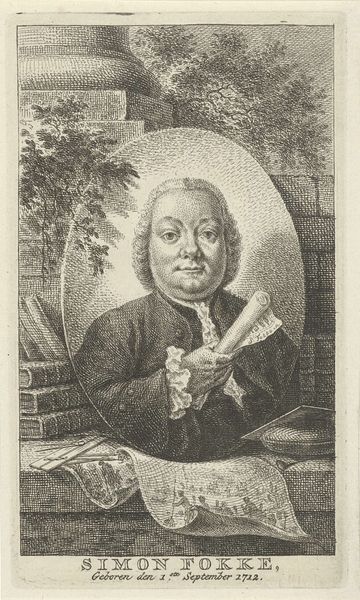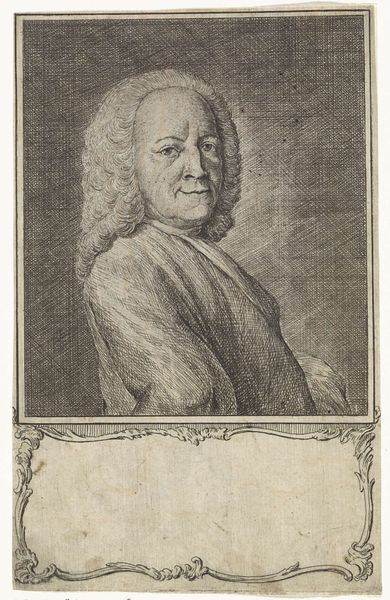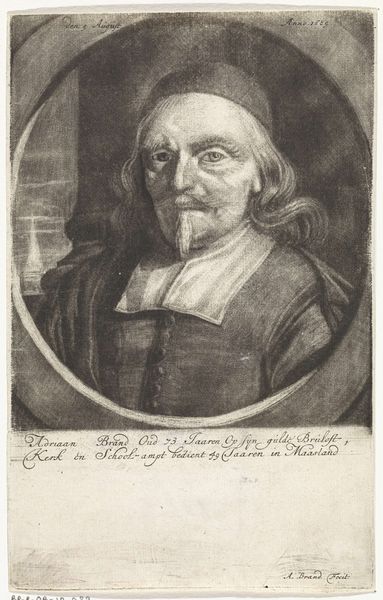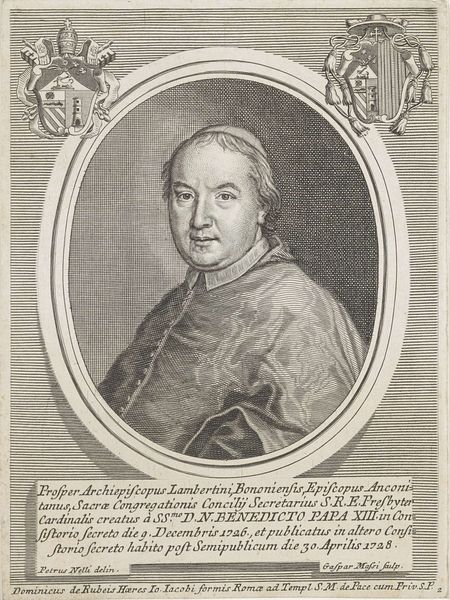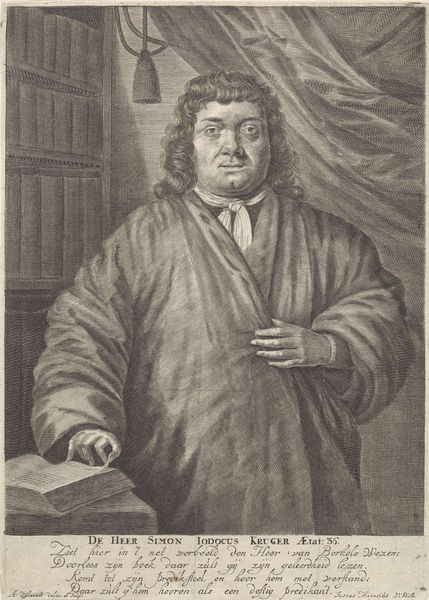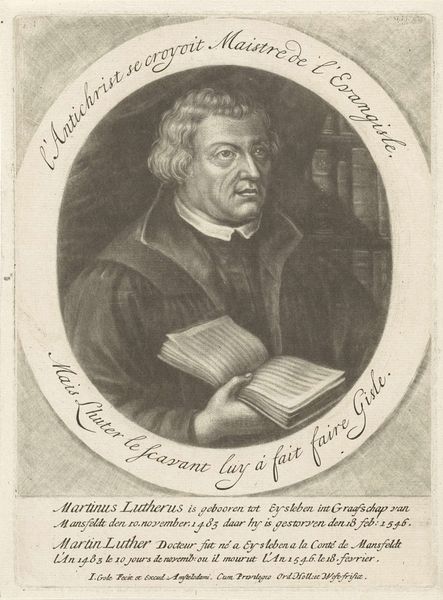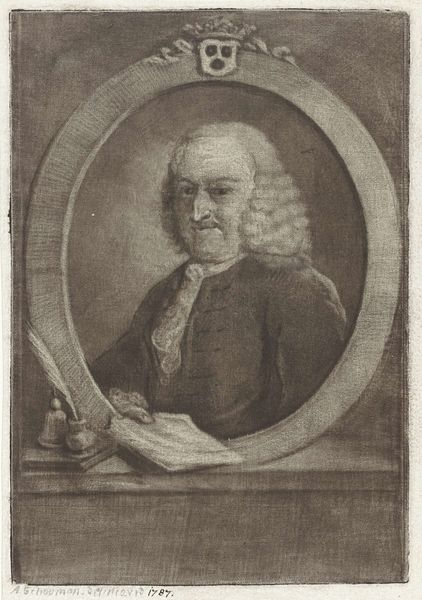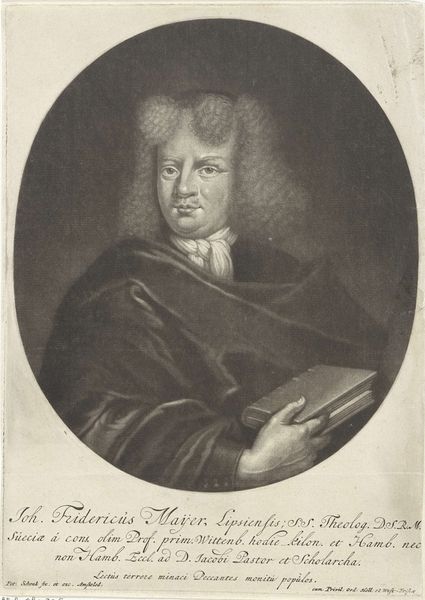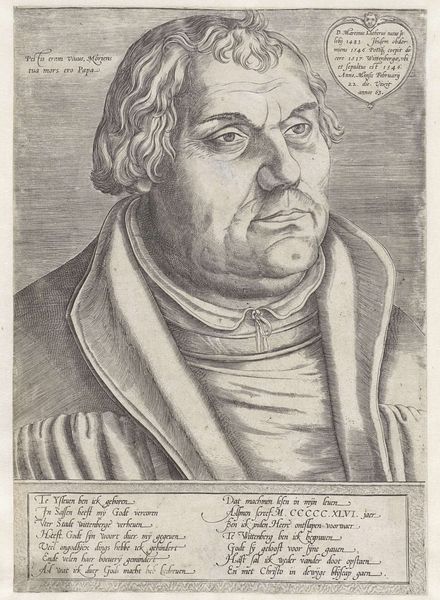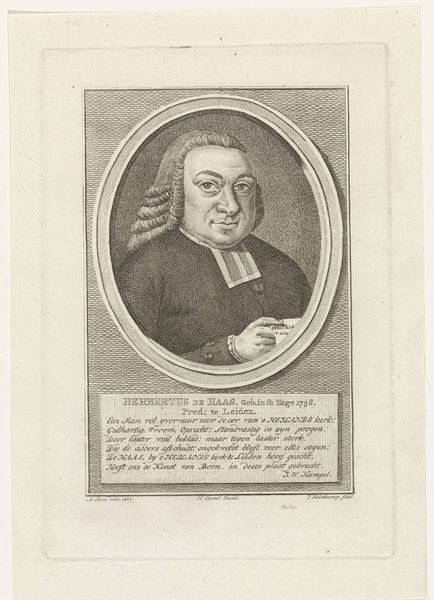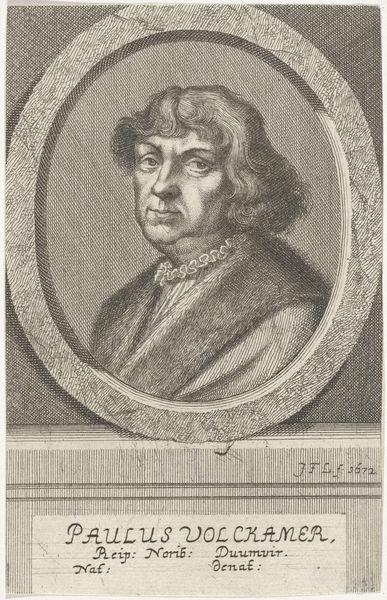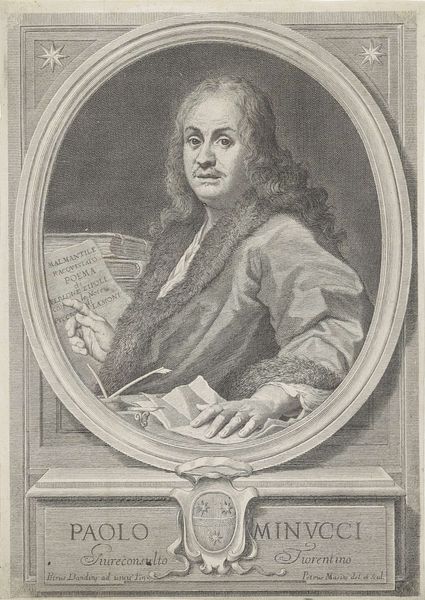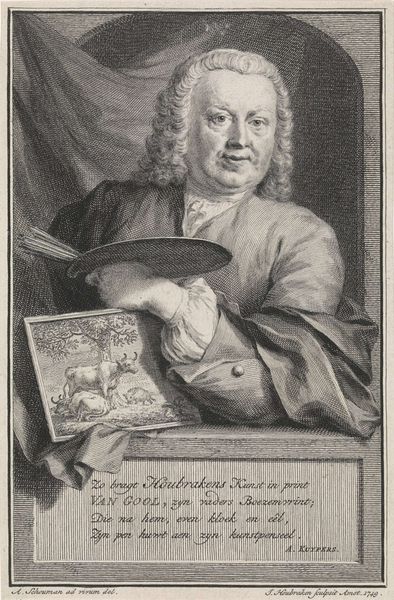
engraving
#
portrait
#
baroque
#
old engraving style
#
19th century
#
history-painting
#
engraving
Dimensions: height 138 mm, width 94 mm
Copyright: Rijks Museum: Open Domain
Editor: Here we have Pieter Schenk's engraving, "Portret van Martin Luther," dating sometime between 1670 and 1713. The detail is really impressive, even though it's relatively small. Luther’s gaze is so intense... almost confrontational. How do you interpret this work? Curator: That intensity is key. Notice how Luther is framed within the oval, almost like a religious icon, while the inscription, "Pietas homini tutissima virtus" above him elevates him to near sainthood. The Bible he holds becomes not just a book, but the symbolic bedrock of his transformative challenge to religious authority. How does that reading resonate with you? Editor: It makes sense. So the artist isn’t just showing us Luther; he's crafting a specific image of him? Highlighting him as the cornerstone of something bigger? Curator: Precisely! Schenk is using established visual tropes – the book, the gaze, the very medium of engraving which lends a sense of timeless authority – to cement Luther’s image as a defender of faith, battling darkness with the clear light of the scripture. The gesture of his hand? It echoes classical oratory, transforming him into a messenger of divine truth. Editor: Wow, I wouldn't have picked up on those layers. It seemed like a straightforward portrait at first glance, but it is much more intricate when viewed as a collection of impactful and intentional visual signifiers! Curator: It’s a potent reminder that portraits can be powerful pieces of visual rhetoric, filled with cultural and psychological weight. Each element chosen to craft the desired impression and ensure its longevity. Editor: Definitely gives me a new perspective on portraiture! Thanks.
Comments
No comments
Be the first to comment and join the conversation on the ultimate creative platform.
